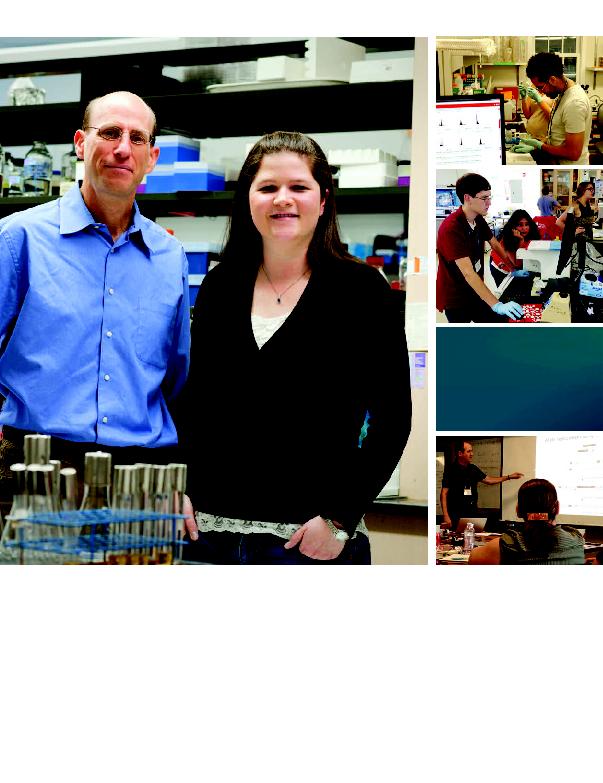
and how we solve problems."
projects with fellow instructor Dr. Brown, as well as with one
of the guest lecturers.
(TA) this year. Borrie, a graduate student in the medical
school's pharmacology program, has worked in Dr.
Gartenberg's lab for three years.
ferences in their field, was powerful. They were not just there
for the lecture, but were around the lab all day, eating with
the students, fielding questions," Borrie recalls. "It was an
incredible opportunity to learn from and network with indi-
viduals of their stature."
national conferences on-site--Nobel laureates such as James
Watson, PhD, codiscoverer of the double-helix structure of
different areas of expertise and
a lot of great ideas go back and forth,
and things really begin to crystallize,"
says Dr. Gartenberg, (left) with his
teaching assistant, Melinda S. Borrie,
a graduate student in the medical school's
H
O
C
T
E
S
Y
O
M
C
R
.
G
T
E
N
E
R
G
P
H